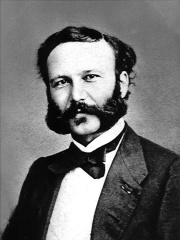
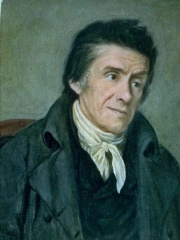
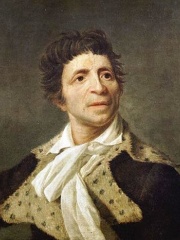
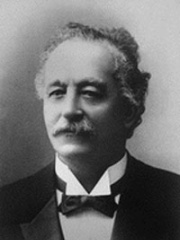
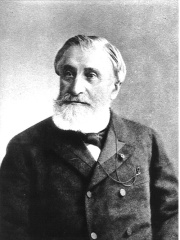
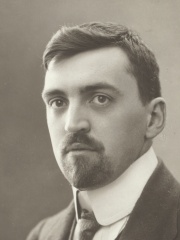
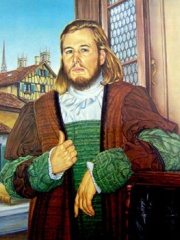
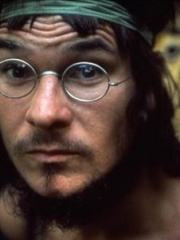
The Most Famous
SOCIAL ACTIVISTS from Switzerland
This page contains a list of the greatest Swiss Social Activists. The pantheon dataset contains 840 Social Activists, 9 of which were born in Switzerland. This makes Switzerland the birth place of the 22nd most number of Social Activists behind Argentina, and Belarus.
Top 9
The following people are considered by Pantheon to be the most legendary Swiss Social Activists of all time. This list of famous Swiss Social Activists is sorted by HPI (Historical Popularity Index), a metric that aggregates information on a biography's online popularity.

1. Henry Dunant (1828 - 1910)
With an HPI of 83.32, Henry Dunant is the most famous Swiss Social Activist. His biography has been translated into 93 different languages on wikipedia.
Henry Dunant (French pronunciation: [ɑ̃ʁi dynɑ̃]; born Jean-Henri Dunant; 8 May 1828 – 30 October 1910), also known as Henri Dunant, was a Swiss humanitarian, businessman, social activist, and co-founder of the Red Cross. His humanitarian efforts won him the first Nobel Peace Prize in 1901. Dunant was born in Geneva to a devout Calvinist family and had business interests in French Algeria and Tunisia. In 1859, while on his way to petition Napoleon III, he witnessed the aftermath of the Battle of Solferino in northern Italy. Horrified by the suffering of the wounded and the lack of care they received, Dunant took the initiative to organize the local population in providing aid for the soldiers. After returning to Geneva, he recorded his experiences in the book A Memory of Solferino, in which he advocated the formation of an organization that would provide relief for the wounded without discrimination in times of war. In February 1863, Dunant was a member of a five-person committee that sought to put his plan into action, which in effect founded the organization that would become the International Committee of the Red Cross. A year later, he took part in a diplomatic conference organized by the Swiss government that led to the signing of the First Geneva Convention. Dunant became embroiled in a business scandal in 1867 which resulted in his bankruptcy and expulsion from the International Committee. He spent the next decades in poverty and obscurity, living in various places across Europe before settling in the Swiss village of Heiden. In 1895, Dunant was rediscovered by a journalist, which brought him renewed attention and support, and in 1901 he was awarded the first Nobel Peace Prize alongside French pacifist Frédéric Passy. He died in Heiden in 1910.

2. Johann Heinrich Pestalozzi (1746 - 1827)
With an HPI of 80.39, Johann Heinrich Pestalozzi is the 2nd most famous Swiss Social Activist. His biography has been translated into 62 different languages.
Johann Heinrich Pestalozzi (; German: [ˈjoːhan ˈhaɪnrɪç pɛstaˈlɔtsiː] ; Italian: [pestaˈlɔttsi]; 12 January 1746 – 17 February 1827) was a Swiss pedagogue and educational reformer who exemplified Romanticism in his approach. He founded several educational institutions both in German- and French-speaking regions of Switzerland and wrote many works explaining his revolutionary modern principles of education. His motto was "Learning by head, hand and heart". Thanks to Pestalozzi, illiteracy in 18th-century Switzerland was overcome almost completely by 1830.

3. Jean-Paul Marat (1743 - 1793)
With an HPI of 79.05, Jean-Paul Marat is the 3rd most famous Swiss Social Activist. His biography has been translated into 66 different languages.
Jean-Paul Marat (UK: , US: , French: [ʒɑ̃pɔl maʁa]; born Jean-Paul Mara; 24 May 1743 – 13 July 1793) was a French political theorist, physician, and scientist. A journalist and politician during the French Revolution, he was a vigorous defender of the sans-culottes, a radical voice, and published his views in pamphlets, placards and newspapers. His periodical L'Ami du peuple (The Friend of the People) made him an unofficial link with the radical Jacobin group that came to power after June 1793. His journalism was known for its fierce tone and uncompromising stance toward the new leaders and institutions of the revolution. Responsibility for the September massacres has been attributed to him, given his position of renown at the time, and a paper trail of decisions leading up to the massacres. Others posit that the collective mentality which made them possible resulted from circumstances and not from the will of any particular individual. Marat was assassinated by Charlotte Corday, a Girondin sympathizer, while taking a medicinal bath for his debilitating skin condition. Corday was executed four days later for his assassination, on 17 July 1793. In death, Marat became an icon to the Montagnards faction of the Jacobins as well as the greater sans-culotte population, and a revolutionary martyr; according to contemporary accounts, some even mourned him with a kind of prayer: "O heart of Jesus! O sacred heart of Marat." The most famous painter in Paris, Jacques-Louis David, immortalized Marat in his iconic painting The Death of Marat. David and Marat were part of the Paris Commune leadership anchored in the Cordeliers section, from where the Revolution is said to have started in 1789 because those who stormed the Bastille lived there. Both David and Marat were on the Commune's Committee of General Security during the beginnings of what would become known as the Reign of Terror.

4. Élie Ducommun (1833 - 1906)
With an HPI of 77.52, Élie Ducommun is the 4th most famous Swiss Social Activist. His biography has been translated into 65 different languages.
Élie Ducommun (19 February 1833, Geneva – 7 December 1906, Bern) was a Swiss peace activist. He was a Nobel laureate, awarded the 1902 Nobel Peace Prize, which he shared with Charles Albert Gobat. Born in Geneva, he worked as a tutor, language teacher, journalist and a translator for the Swiss federal Chancellery (1869–1873). In 1867 he helped to found the Ligue de la paix et de la liberté (League of Peace and Freedom), though he continued working at other positions, including secretary for the Jura-Simplon Steel Company from 1873 to 1891. That year, he was appointed director of the newly formed International Peace Bureau, the first non-governmental international peace organization, based in Bern. He refused to accept a salary for the position, stating that he wished to serve in this capacity solely for reasons of idealism. From 1895 he was made the director of Correspondance bi-mensuelle, journal of the International Peace Office. His keen organizational skills ensured the group's success. He was awarded in the Nobel Peace Prize in 1902, and served as director of the organization until his death in 1906.
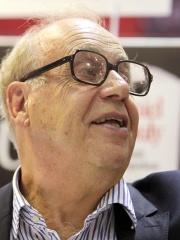
5. Jean Ziegler (b. 1934)
With an HPI of 63.05, Jean Ziegler is the 5th most famous Swiss Social Activist. His biography has been translated into 22 different languages.
Jean Ziegler (French: [ziglɛʁ]; born Hans Ziegler, 19 April 1934) is a Swiss former professor of sociology at the University of Geneva and the Sorbonne, Paris, and former vice-president of the Advisory Committee to the United Nations Human Rights Council. He was previously Member of the Swiss Parliament for the Social Democrats from 1981 to 1999. He has also held several positions with the United Nations, especially as Special Rapporteur on the Right to Food from 2000 to 2008, and as a member of the Advisory Committee of the UN Human Rights Council from 2008 to 2012. Ziegler has authored numerous works, is a lecturer, and is well known for this sentence: "A child who dies from hunger is a murdered child."

6. Gustave Moynier (1826 - 1910)
With an HPI of 61.43, Gustave Moynier is the 6th most famous Swiss Social Activist. His biography has been translated into 18 different languages.
Gustave Moynier (21 September 1826 – 21 August 1910) was a Swiss jurist who was active in many charitable organizations in Geneva. He was a co-founder of the International Committee for Relief to the Wounded, which became the International Committee of the Red Cross after 1876. In 1864, he took over the position of president of the committee from Guillaume-Henri Dufour, and he was also a major rival of the founder Henry Dunant. During his record long term of 46 years as president, he did much to support the development of the committee in the first decades after its creation.

7. Hector Hodler (1887 - 1920)
With an HPI of 61.30, Hector Hodler is the 7th most famous Swiss Social Activist. His biography has been translated into 20 different languages.
Hector Hodler (1 October 1887, in Geneva – 31 March 1920, in Leysin, Switzerland) was a Swiss Esperantist who had a strong influence on the early Esperanto movement. Hodler was a son of the Swiss painter Ferdinand Hodler, who after a period of poverty became suddenly very well-to-do, and Augustine Dupin. As a 16-year-old, Hector Hodler learned Esperanto with his classmate Edmond Privat, and founded soon afterward a club and the journal Juna Esperantisto ("The Young Esperantist"). The schoolbench was their editorial office for five years as they managed production, addressed copies and replied to correspondence. Sometime later they learned about Idiom Neutral and about Bolak, in order to convince themselves as to whether Esperanto was truly the "best" international language. Besides The Young Esperantist, he authored articles in Through the World and the translation of the novel Paul et Virginie (Paul and Virginia) by Bernardin de Saint Pierre (1905). In 1906, on the occasion of the second World Congress of Esperanto organised by Hodler and Privat (born in 1889), he saw in the organizational proposals by Théophile Rousseau and Alphonse Carles for Esperanto consuls (konsuloj) a chance to realize his plan to organize reciprocal self-help among people of good will. This was the germ of the Universal Esperanto Association (in Esperanto, UEA: Universala Esperanto-Asocio) of which Hodler was a co-founder. In 1907 he took over the editorship of Esperanto magazine from its founder Paul Berthelot and made it a significant journal dealing with organizational questions from the language community. Esperanto also included many articles about social life, similar to the present magazine Monato. He edited it for 13 years until his death, except for six months in 1914 during the First World War. It is still produced as a publication associated with the UEA. He authored and translated many important articles, and he suggested translating masterpieces instead of trivial things. He signed his articles with the initials A. R. The proposals of Rousseau and Carles were melded with his plans, were discussed in his magazine and received a warm welcome. By the third World Esperanto Congress in 1907, there were already about 200 consuls (delegates). Hodler and others such as Théophile Rousseau founded the Universal Esperanto Association on 28 April 1908, and Hodler became General Director and Vice-President. He was a friend and colleague of Eduard Stettler, and Edmond Privat was one of his editors. Hodler wanted to use the magazine "to create a strong bond of solidarity among members of diverse languages." During the war, Hodler, with the then secretary of the association Hans Jakob, organized the Wartime Assistance of the association. After the death of Harold Bolingbroke Mudie in 1916, the presidency of the World Esperanto Association was vacant until after the war, when Hodler was elected to succeed him. Hodler was especially interested in social questions, pacifism and animal protection. Privat wrote about him: "To that which the genius of Zamenhof initiated in the linguistic field, he added the necessary basis in the social field." According to an article by László Halka in Enciklopedio de Esperanto, "it is characteristic of his noble spirit and humanity that in Geneva he joined the local animal protection society, and that he said he would like to make the UEA an association to protect humans." In the last several years of his life, when he was already quite unhealthy, he turned mainly to scientific problems. In 1916 he wrote a 387-page work in French about the peaceful organization of peoples. After his death in 1920, he bequeathed to the UEA the magazine Esperanto and his Esperanto library, which nowadays bears his name, as well as a large sum of money to ensure its continued existence. He is buried at the cemetery of Saint George in Geneva next to his father.

8. Felix Manz (1498 - 1527)
With an HPI of 60.59, Felix Manz is the 8th most famous Swiss Social Activist. His biography has been translated into 18 different languages.
Felix Manz (also Mantz; c. 1498 – 5 January 1527) was an Anabaptist, a co-founder of the original Swiss Brethren congregation in Zürich, Switzerland, and an early martyr of the Radical Reformation.

9. Bruno Manser (1954 - 2005)
With an HPI of 54.00, Bruno Manser is the 9th most famous Swiss Social Activist. His biography has been translated into 17 different languages.
Bruno Manser (25 August 1954 – presumed dead 10 March 2005) was a Swiss environmentalist and human rights activist. From 1984 to 1990, he stayed with the Penan people in Sarawak, Malaysia, organising rainforest blockades against timber companies. After he emerged from the forests in 1990, he engaged in public activism for rainforest preservation and the human rights of indigenous peoples, especially the Penan, which brought him into conflict with the Malaysian government. He also founded the Swiss non-governmental organization (NGO) Bruno Manser Fonds in 1991. Manser disappeared during his last journey to Sarawak in May 2000 and is presumed dead.
People
Pantheon has 9 people classified as Swiss social activists born between 1498 and 1954. Of these 9, 1 (11.11%) of them are still alive today. The most famous living Swiss social activists include Jean Ziegler. The most famous deceased Swiss social activists include Henry Dunant, Johann Heinrich Pestalozzi, and Jean-Paul Marat.
Living Swiss Social Activists
Go to all RankingsDeceased Swiss Social Activists
Go to all RankingsHenry Dunant
1828 - 1910
HPI: 83.32
Johann Heinrich Pestalozzi
1746 - 1827
HPI: 80.39
Jean-Paul Marat
1743 - 1793
HPI: 79.05
Élie Ducommun
1833 - 1906
HPI: 77.52
Gustave Moynier
1826 - 1910
HPI: 61.43
Hector Hodler
1887 - 1920
HPI: 61.30
Felix Manz
1498 - 1527
HPI: 60.59
Bruno Manser
1954 - 2005
HPI: 54.00
Overlapping Lives
Which Social Activists were alive at the same time? This visualization shows the lifespans of the 6 most globally memorable Social Activists since 1700.

